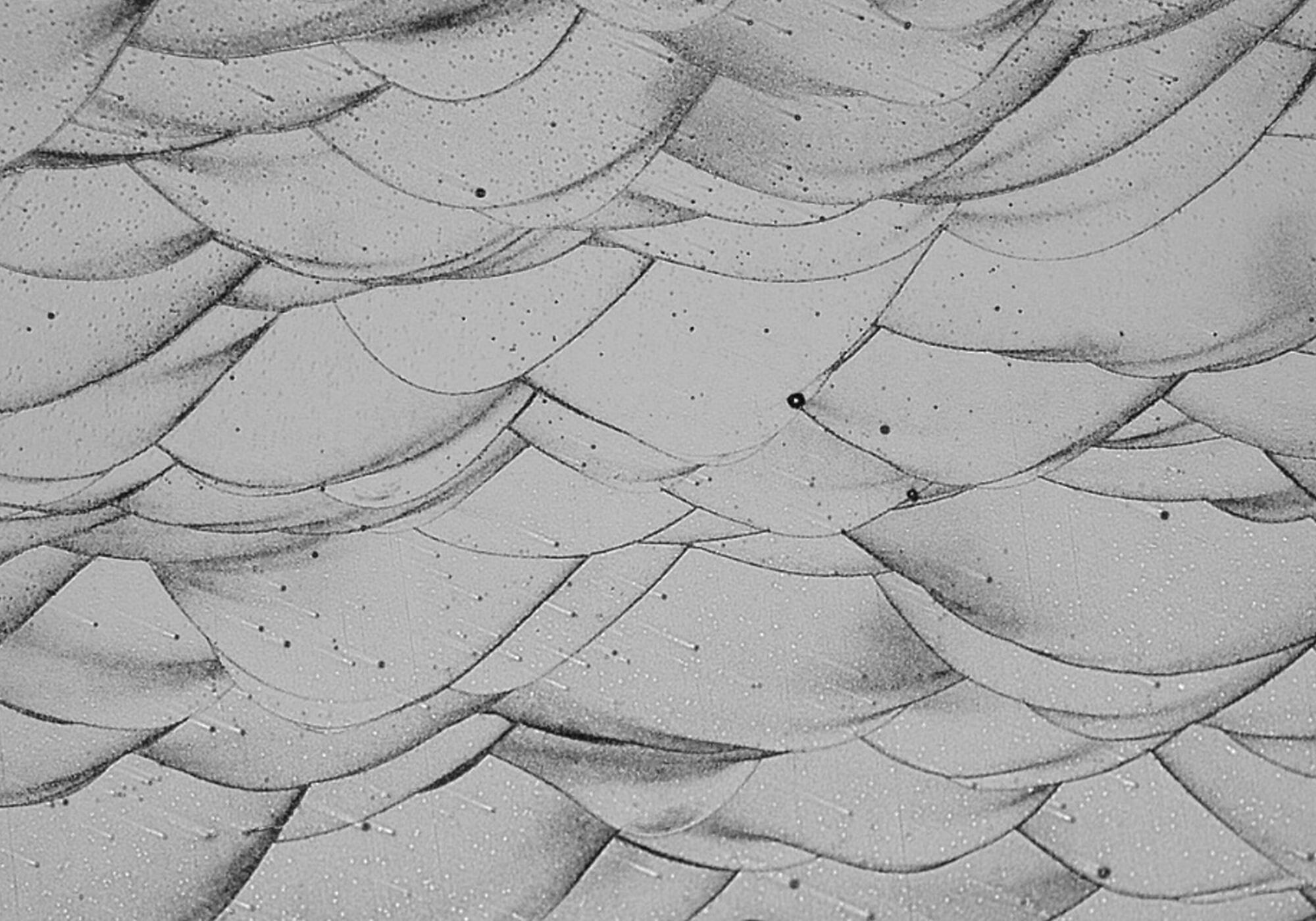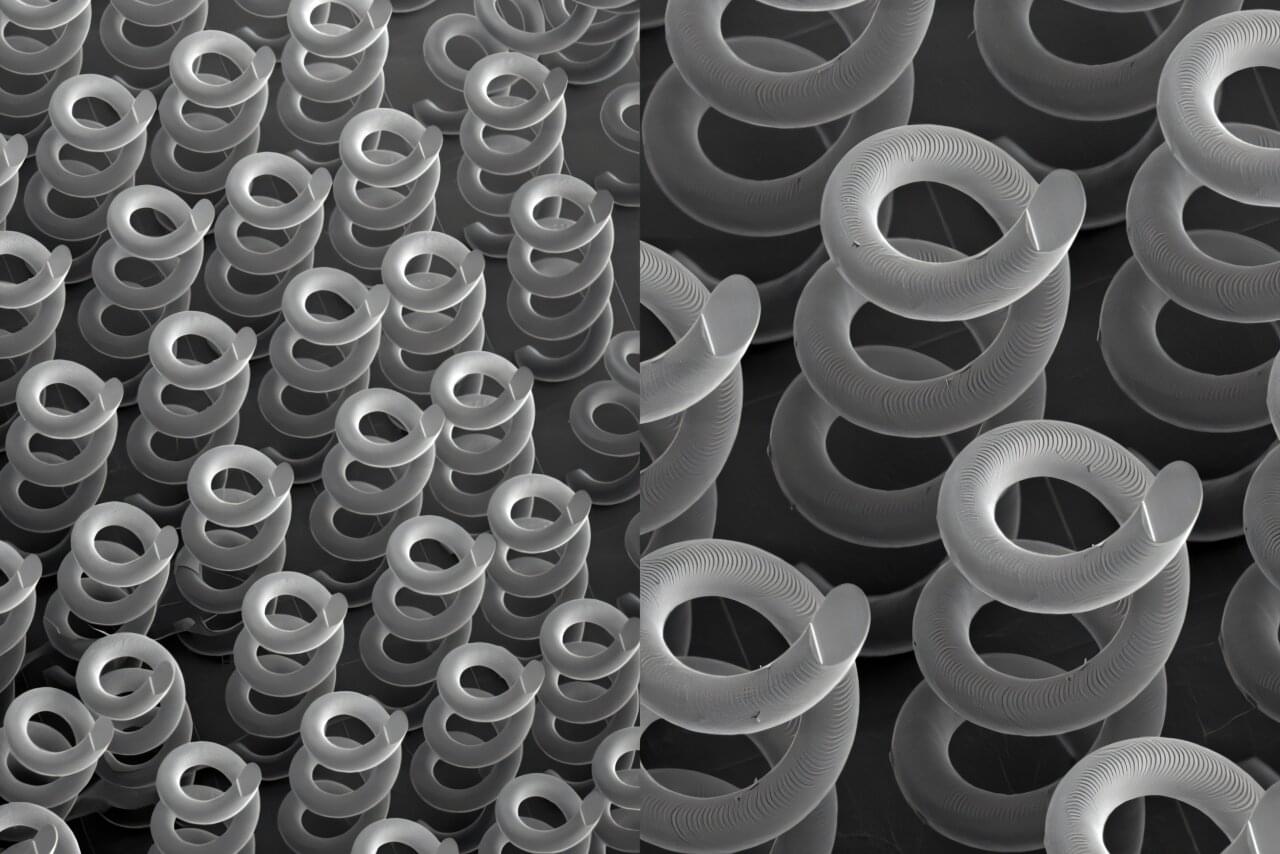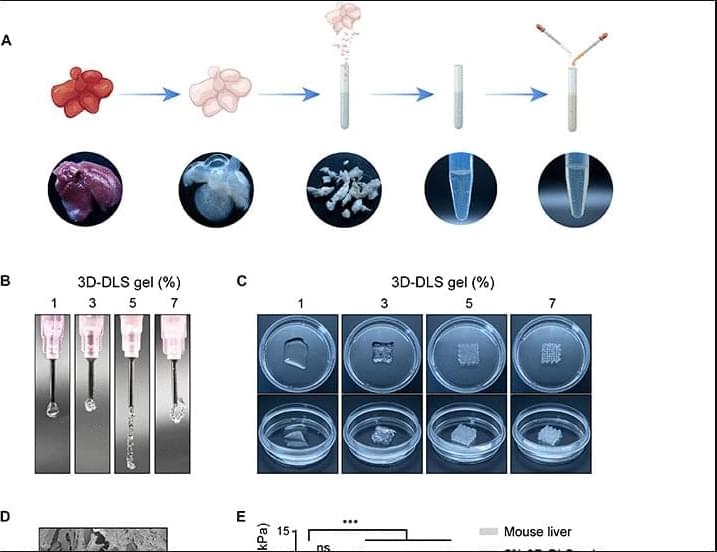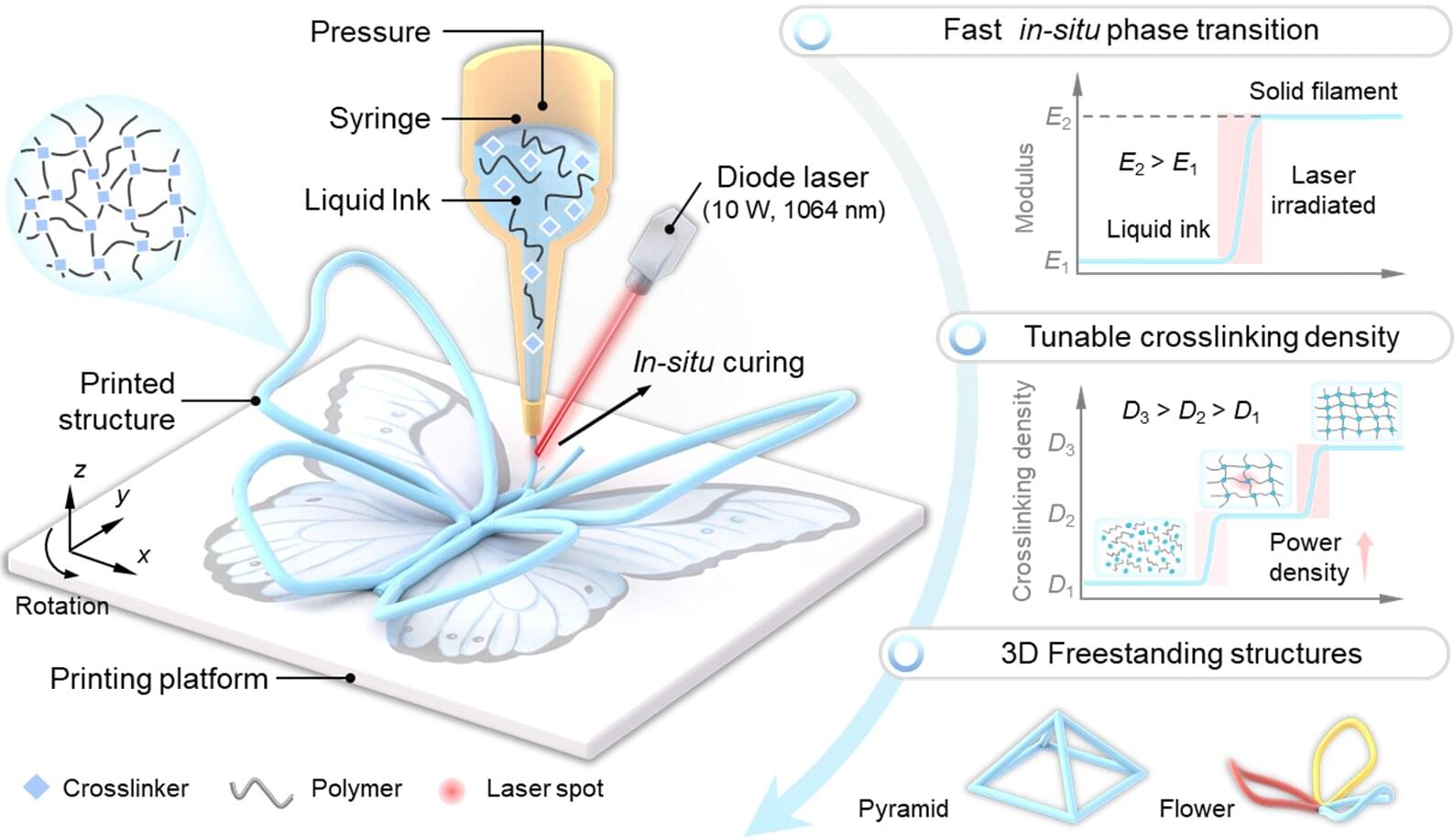Category: 3D printing – Page 2
Scientists 3D Print Human Brain Tissue for the First Time
#HumanBrain #TechNews #3DPrinter
A 3D-printed Christmas tree made entirely of ice
A team of physicists from the University of Amsterdam’s Institute of Physics has 3D-printed a Christmas tree made entirely of ice. Researchers Menno Demmenie, Stefan Kooij and Daniel Bonn used no freezing technology or refrigeration equipment—just water and a vacuum. In time-lapse videos, you can see how the Christmas tree is printed and how it melts again when the vacuum pump is turned off. The work is published on the arXiv preprint server.
The secret of the tree lies in so-called evaporative cooling. This is the same principle mammals use to regulate their body temperature.
In a low-pressure vacuum chamber, water evaporates rapidly at room temperature. As each water molecule evaporates, it takes with it a small amount of heat, causing the remaining water to become increasingly colder, eventually cooling to below 0°C. At that point, the water is still liquid, but supercooled. As soon as the ultra-thin stream (about as thin as a human hair: 16 micrometers) hits the already formed layer of ice, it freezes instantly.

How 3D printing creates stronger vehicle parts by solving aluminum’s high-temperature weakness
Aluminum is prized for being lightweight and strong, but at high temperatures it loses strength. This has limited its use in engines, turbines, and other applications where parts must stay strong under high temperature conditions. Researchers at Nagoya University have developed a method that uses metal 3D printing to create a new aluminum alloy series optimized for high strength and heat resistance. All new alloys use low-cost, abundant elements, and are recycling-friendly, with one variant staying both strong and flexible at 300° C.
The study is published in Nature Communications.

3D-printed helixes show promise as THz optical materials
Researchers at Lawrence Livermore National Laboratory (LLNL) have optimized and 3D-printed helix structures as optical materials for terahertz (THz) frequencies, a potential way to address a technology gap for next-generation telecommunications, non-destructive evaluation, chemical/biological sensing and more.
The printed microscale helices reliably create circularly polarized beams in the THz range and, when arranged in patterned arrays, can function as a new type of Quick Response (QR) for advanced encryption/decryption. Their results, published in Advanced Science, represent the first full parametric analysis of helical structures for THz frequencies and show the potential of 3D printing for fabricating THz devices.


3D printing researchers develop fast-curing, environmentally-friendly concrete substitute
Researchers at Oregon State University have developed a quick-setting, environmentally friendly alternative to concrete they hope can one day be used to rapidly 3D print homes and infrastructure.
Also known as additive manufacturing, 3D printing is already being used to help solve construction challenges such as the global housing crisis that’s emerged as Earth’s population approaches 8.5 billion.
But cement, the binding agent in concrete, accounts for about 8% of the planet’s carbon dioxide emissions, and concrete’s curing time—which can be multiple days—and required structural supports can inhibit progress on construction projects.

Laser-assisted 3D printing can fabricate free-standing thermoset-based electronics in seconds
Thermosets, such as epoxy and silicon rubbers, are a class of polymer (i.e., plastic) materials that harden permanently when they undergo a specific chemical reaction, known as “crosslinking.” These materials are highly durable, heat-resistant with excellent electrical insulation in various applications such as in adhesives, coatings, and automotive parts.
Thermosets are also widely used to fabricate electronic components, including switches, circuit breakers and other core circuit components.
So far, thermoset-based free-standing devices have proved difficult to construct by using conventional 3D printing processes. One key reason for this is that the materials need to be provisionally supported by other supporting objects until they become solid, which adds more steps to the printing process.
This kid-friendly 3D printing pen makes edible candy sculptures
3Doodler, known for its 3D-printing pens, has announced a kid-friendly version of its Chef 3D pen that prints with candy instead of plastic filament. The new 3Doodler Candy, arriving later this year, swaps a power cord for a 45-minute rechargeable battery and uses gluten-free vegan isomalt capsules instead of sugar.
The candy comes out of the pen at 45 degrees Fahrenheit, so it’s safe for kids aged six and up to use.

Engineers repurpose a mosquito proboscis to create a 3D printing nozzle
When it comes to innovation, engineers have long proved to be brilliant copycats, drawing inspiration directly from nature. But now some scientists are moving beyond simple imitation to incorporating natural materials into their designs. Stuck for ideas on how to create ultra-fine, low-cost 3D printing nozzles, researchers at McGill University in Canada repurposed the proboscis of a deceased female mosquito to create a sustainable, high-resolution 3D printing tip.
The work is published in the journal Science Advances.
High-resolution 3D printing is a process that creates three-dimensional objects with extremely fine details and very smooth surfaces. The technology is used in numerous fields such as aerospace, dentistry and biomedical research. However, its level of precision comes at a steep cost. The tiny nozzles can cost more than $80 per tip and are made of metal or plastic, both of which are nonbiodegradable.